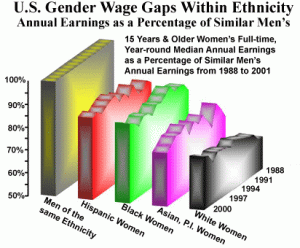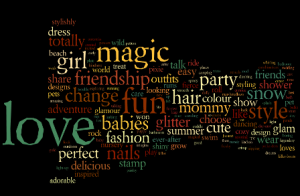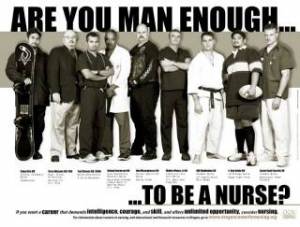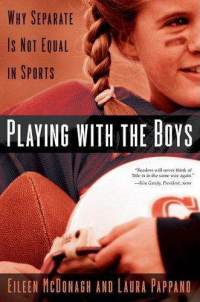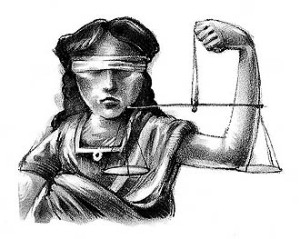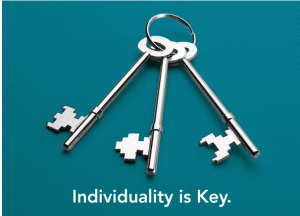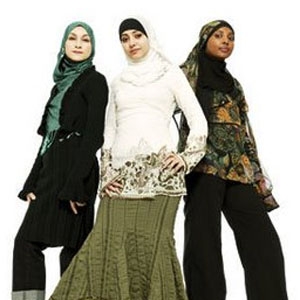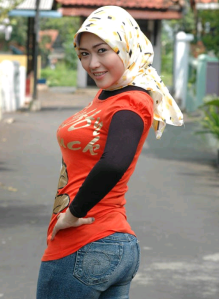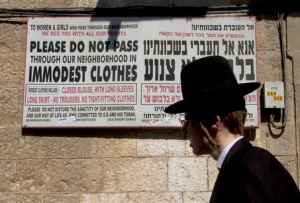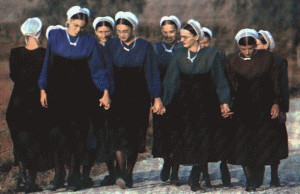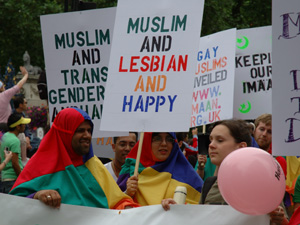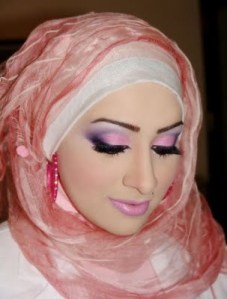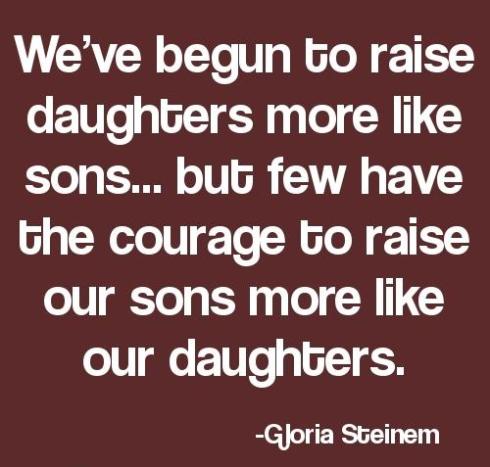 Disability is one of the few factors in women’s lives that can overcome racist assumptions about their sex lives. Nondisabled black women are very often compared to or pictured with animals in advertising[1] and this idea that black women will be wild, animalistic lovers is in the back of many people’s minds. But, if a black woman is in a wheelchair, most people will see the chair and assume asexuality before they make any association to her skin color. Neither assumption is correct but it is interesting how one aspect of a person’s identity can overshadow everything else.
Disability is one of the few factors in women’s lives that can overcome racist assumptions about their sex lives. Nondisabled black women are very often compared to or pictured with animals in advertising[1] and this idea that black women will be wild, animalistic lovers is in the back of many people’s minds. But, if a black woman is in a wheelchair, most people will see the chair and assume asexuality before they make any association to her skin color. Neither assumption is correct but it is interesting how one aspect of a person’s identity can overshadow everything else.
Physical appearance is extremely important to American society and the superficiality of the media directly affects all people but has the direst consequences for women. In the hierarchy of patriarchy the closest women can get to the top is when they are young, thin, nondisabled, white (blond), straight and pretty looking. To be clear, women do not actually have to be any of these things but to be successful, especially in the media,they must appear to be all of these things.
Visibly disabled women are automatically excluded from this cult of beauty, as are women of color, normal-sized and heavy women, transgender and lesbian women, and older women. The male/female dichotomy has such a stranglehold on aesthetics in the United States that even when someone who does fit this description, like actress Julia Roberts, forgets to change something natural about her body (shave her armpits) she is publicly chastised and ridiculed for not conforming to the beauty ideals of Hollywood.
The four Killing Us Softly documentaries with Jean Kilbourne best explain how dangerous being bombarded by these images can be for women. American women are expected to be nearly hairless, have flawless skin, long, silky hair, no fat or cellulite, a small waist and big breasts. The beauty industry in the U.S. is a multi-billion dollar per year business and has a big interest in challenging women to be flawless, knowing they will never achieve perfection but will spend lots of money trying.
Even women who have slightly masculine features can be discriminated against and face violence, especially if they are assumed to be lesbian. Obviously the male/female dichotomy is most dangerous for transgender and intersexed individuals who have the courage to confound gender stereotypes and live according to the aspects of their gender identity that they are most comfortable with, but even internationally acclaimed athletes are facing the consequences of being accused of not being feminine enough.
 Caster Semenya, a world-record-holding Olympic runner, was forced to undergo sex testing to see if she is “female enough” to compete against other women. In accusing female athletes of not being entirely female the The International Association of Athletics Federations (IAAF) and the International Olympic Committee (IOC) are not concerned about fairness to all involved but rather about their own public images.
Caster Semenya, a world-record-holding Olympic runner, was forced to undergo sex testing to see if she is “female enough” to compete against other women. In accusing female athletes of not being entirely female the The International Association of Athletics Federations (IAAF) and the International Olympic Committee (IOC) are not concerned about fairness to all involved but rather about their own public images.
The co-founder of the IOC’s Olympic Science Academy and of the Sports Science Institute in Cape Town, South Africa, Tim Noakes, claims “As many as eight ‘intersex’ women may have been expelled from athletics in the past and I gather that they were warned that if they made a fuss, they would be exposed. So it seems it’s not about athletic advantage, it’s about keeping the Olympics free of ‘intersex’ athletes, free of unwanted complications. It sends the message that women must do what men say and if the eight previous athletes had to be sacrificed, so be it….”[2]
Noakes contends that athletes suspected of being intersexed are not treated with respect. Whether or not Semenya is found to be intersexed or not, he feels she should be allowed to compete stating, “You can’t exclude ‘intersex’ athletes and there is growing consensus… that whatever gender you were assigned at birth, that is your gender…. There is no single test that will show whether you are more male than female.” He goes on to argue that “some genetic variants” are allowed in sports and if they are “linked to gender, so be it.” Because the implications for forcing gender conformity are so widespread the LGBTQI community must come together to fight against discrimination on the basis of sex.
“As long as dependence is seen as a personality flaw in the lesbian community, our ability to be a truly diverse and inclusive force to be reckoned with is nonexistent…. As long as we think some of us are going it alone and others aren’t, we are ignoring the very real facts of social structure. The possibility of going it alone is just an illusion that distracts us from organizing. You are either successful on someone else’s back, or arm in arm with her. Your choice.”[3]
 In a similar way that Asian-Americans are pointed at as being “model minorities” so too are lesbians singled out of the larger LGBTQAI movement. Well, not lesbians, per se, but actions that traditionally would have been classified as lesbian. And it is not because American culture suddenly woke up and decided to be more inclusive; it is precisely to continue dividing minorities and to pit them against each other so that they cannot fight together.“That’s the capitalist stake in keeping us divided. If we’re tied up fighting each other, we won’t be struggling together against the real enemy.”[4]
In a similar way that Asian-Americans are pointed at as being “model minorities” so too are lesbians singled out of the larger LGBTQAI movement. Well, not lesbians, per se, but actions that traditionally would have been classified as lesbian. And it is not because American culture suddenly woke up and decided to be more inclusive; it is precisely to continue dividing minorities and to pit them against each other so that they cannot fight together.“That’s the capitalist stake in keeping us divided. If we’re tied up fighting each other, we won’t be struggling together against the real enemy.”[4]
More and more heterosexual women are engaging in activities that twenty years ago would have had them classified as dykes: publicly kissing, touching and fondling other women. Some would argue that this shows a greater acceptance of gay culture in the United States. While acceptance of homo- and bisexuality has grown greatly over the past decades these straight-but-seem-bi women are using the heterosexual male lesbian fantasy to their advantage while simultaneously reinforcing gender inequality. Katy Perry, a popular U.S. performing artist, took this advantage to the extreme with her multi-million dollar record deal showcasing her not-really-lesbian behavior. Again, the labels one chooses to use to identify herself are extremely important personally, and politically.
Sexual relationships between women in the United States are generally seen in one of four ways: as an arousal tool for heterosexual men, as harmless (i.e. not cheating for a woman in a monogamous heterosexual relationship), as a threat or an abomination against God, or less often, as legitimate loving relationships.
The first two analyses of lesbian relationships are closely linked; they assume that women loving women poses no threat to the heterosexist patriarchal machine because women are valued less than men. The “joke” is still made that some women are only lesbians because they have not yet had sex with the “right” man.[5] This patronizing of women’s sexuality takes away agency and shows that often women’s opinions and feelings are not respected even when they are clearly voiced. The other side of this coin is that many men feel that if their monogamous female sexual partner engages in sexual activity with another woman it is not cheating, while if she were with another man it would be, once again showing how little value is placed on women owning their own sexuality.
This criticism should in no way be seen as a disapproval of polyamory, or love between multiple consenting adults, but rather as a critique of the sexist and misogynistic way in which women’s sexuality is viewed by the American culture at large.
 The third view of lesbian relationships is the most overtly harmful because people who view women loving women as a threat to their way of life are more likely to act out against it by pushing for discriminatory legislation or in the form of hate crimes. Real opposition to lesbianism often comes from the Religious Right in the United States that has a strong interest in maintaining the patriarchal hierarchy. Because lesbians generally operate outside the normal sphere of “woman depending on man” this weakens men’s power over women, something the Church sees clearly. The lesbian community has often been an example of the strength of women and many heterosexual women have learned from lesbian communities that there are alternatives to depending on men.
The third view of lesbian relationships is the most overtly harmful because people who view women loving women as a threat to their way of life are more likely to act out against it by pushing for discriminatory legislation or in the form of hate crimes. Real opposition to lesbianism often comes from the Religious Right in the United States that has a strong interest in maintaining the patriarchal hierarchy. Because lesbians generally operate outside the normal sphere of “woman depending on man” this weakens men’s power over women, something the Church sees clearly. The lesbian community has often been an example of the strength of women and many heterosexual women have learned from lesbian communities that there are alternatives to depending on men.
Bisexualwomen, while they face some of the same discrimination as lesbians, also face discrimination that is unique to their situation. Biphobia–the fear or hatred of people who identify as bisexual–exists both in the heterosexual community and the homosexual community.
Everyone in America is brought up seeing the world through dichotomies: black/white, male/female, good/bad, straight/gay, etc. This socialization is just as effective on homosexuals as on heterosexuals and is often responsible for the polarizing of butches and femmes in the lesbian community. People who see the world only in pairs of opposites lack imagination and are made uncomfortable by anything or anyone who does not neatly fit into the good box or the bad box, as dichotomies always result in one side being clearly more valued than the other.
Bisexuals are discriminated against by heterosexuals who can only see that they love people of the same sex. They are further discriminated against by the homosexual community who see them as traitors to the cause for loving people of the opposite sex. Bisexuals are often seen as indecisive, confused, oversexed and/or dangerous. This exclusion can lead to both physical and psychological health problems; a recent survey found that bisexual women have the poorest health of all women. The LGBTQI community has poor overall health in general–a direct result of being marginalized by society.
“Compared to heterosexuals, gays, lesbians, and bisexuals…were more likely to be tense or worried, to smoke, have asthma, abuse drugs, or be victims of sexual abuse. Bisexual men and women were also more likely than heterosexuals to say they faced barriers to getting health care, had higher cardiovascular risk, felt sad, and had contemplated suicide in the past year. Binge drinking was more common among bisexual women than heterosexuals.”[6]
Bisexuals were also more likely to be poor and bisexual women reported the highest rate of sexual assault among all sexuality groups. Most bisexuals do favor one sex more than the other but are openly attracted to both men and women. Some bisexuals explain that they are attracted to certain qualities in people and it does not matter what sex the person possessing those qualities is. While bisexual is the most commonly used term for people who are attracted to more than one gender, other terms may be more appropriate to individuals’ situations such as pansexual, fluid, or omnisexual, as these terms do away with the male/female dichotomy that the term bisexual reinforces. Again, naming one’s own identity is an important step in political action.
 Slowly bisexuals are becoming more accepted within the LGBTQAI movement, as is apparent that people rarely forget the ‘B’ in the alphabet soup, but the people behind the letter are still rarely visible. Women of all sexualities must be included in the campaign for gender equality in the United States and around the world.
Slowly bisexuals are becoming more accepted within the LGBTQAI movement, as is apparent that people rarely forget the ‘B’ in the alphabet soup, but the people behind the letter are still rarely visible. Women of all sexualities must be included in the campaign for gender equality in the United States and around the world.
The LGBTQAI movement has long been visible in the United States and has paved the way for Pride Movements around the world. The determination of the politically active sexual minorities within the U.S. can be felt all the way to the White House. Only last year, in 2010, did LGBTQAI individuals earn the right to visit their partners in the hospital and make medical decisions for them if they are the appointed guardians. Nation-wide legalization of same-sex marriage is still a ways off, at least until California’s ban on same-sex marriage, Proposition 8, gets to the Supreme Court.
“It’s not possible to know whether the final ruling in this case will broadly confront the overarching denial of equal protection and due process created by prohibiting one segment of society from entering into marriage. The Supreme Court has, in different cases, called marriage ‘essential to the orderly pursuit of happiness by free men’ and a ‘basic civil right.’”[7]
Other legislation is also in the works to guarantee civil rights for the LGBTQAI community. On May 20, 2010 Senator Al Franken introduced the Student Non-Discrimination Act to the Senate, the bill “would prohibit discrimination in schools on the basis of sexual orientation and gender identity/expression.” According to the Gay, Lesbian and Straight Education Network (GLSEN) more than 85% of LGBT students have been harassed and more than 60% feel unsafe at school because of their sexual orientation.
Moreover, one-third of LGBT students “missed a day of school in the past month because of feeling unsafe, five times higher than a national sample of students.”[8]Despite the advancement of rights with this legislation LGBTQAI students in New Jersey will still not be able to find books in their school library with which they can identify. The school board took the liberty of banning “gay-theme books” from a local high school.[9]
Just days before Senator Franken introduced the Student Non-Discrimination Act, the Human Rights Campaign reported that the Minnesota governor had vetoed a bill that would have given same-sex couples the right to take charge of their partners’ remains after death and also to sue in cases of wrongful death.[10]
In many ways laws regarding the rights of same-sex couples, or sexual minority individuals, follow the “two steps forward, one step back” rule. The most visible battle currently is to reform the United States Defense of Marriage Act (DOMA) which the Obama administration historically has decided not to defend.
 And very recently the US finally overturned the military’s policy of “Don’t ask, don’t tell” (DADT) regarding sexual orientation of service members. Under this policy those service members who were found to be homo- or bisexual or who disclosed their sexual orientation to anyone could be discharged from the military. Even though this policy was supposed to apply equally to all serving in the military those serving who filled a difficult position, or were much needed by the military, were generally overlooked in the witch-hunt. “In 1994 Col. Margarethe Cammermeyer, winner of a bronze star in Vietnam, won reinstatement in the Army Nurse Corps after being discharged for admitted homosexuality.”[11]
And very recently the US finally overturned the military’s policy of “Don’t ask, don’t tell” (DADT) regarding sexual orientation of service members. Under this policy those service members who were found to be homo- or bisexual or who disclosed their sexual orientation to anyone could be discharged from the military. Even though this policy was supposed to apply equally to all serving in the military those serving who filled a difficult position, or were much needed by the military, were generally overlooked in the witch-hunt. “In 1994 Col. Margarethe Cammermeyer, winner of a bronze star in Vietnam, won reinstatement in the Army Nurse Corps after being discharged for admitted homosexuality.”[11]
The ban disproportionately affected minorities and women. The latest data, compiled by the gay rights group Servicemembers United from Defense Department numbers, showed that in 2008, 45% of troops discharged under ‘Don’t ask, don’t tell’ were minorities, while minorities were 30% of the service. Women accounted for 34% of the discharges but were 14% of the military.[12]
Highly vocal spokesperson for the repeal of DADT, Lt. Daniel Choi, an openly gay Korean-American man whose skills as an Arabic translator made him too valuable for the Army to let go, was reinstated while DADT was still ineffect, after being discharged because of his sexual orientation. He and other military activists took direct action to overturn DADT, including handcuffing themselves to the White House fence, and fasting.
Autumn Sandeen, a disabled transgender Navy veteran who handcuffed herself to the White House fence, was disrespected and harassed while in custody because of her gender identity. Federal law enforcement officers referred her to as an “impersonator,” “shim,” and “it,” degrading and dehumanizing terms that do not reflect the federal government’s duty to protect and honor all American citizens.
In an eloquent and telling letter to President Barack Obama she wrote, “I personally approached this civil disobedience action with honor, courage, and commitment — the core values of the U.S. Navy — and my honor, courage, and commitment was met with disrespectful and dehumanizing epithets by your representatives in the Park Police and U.S. Marshals.”[13]
Inclusion of a clause disallowing discrimination based on sex or gender in the Constitution would provide grounds on which Sandeen’s case could be taken to the federal level. As has been seen with legislation regarding homosexuality, individual laws are not striking forcefully enough at the inequalities faced on a daily basis by a considerable number of Americans.
Unfortunately, it is not uncommon in American society for women in general to be disrespected or dehumanized. One of the cruelest examples of this is the lack of Reproductive Justice (RJ) available to so many women in the United States. Because women’s opinions are not valued their autonomy and decision-making abilities are frequently called into question while men’s decisions are considered sound and logical.
In the Catholic Church priests are not punished for sexually abusing children over decades while one nun was excommunicated for allowing doctors to perform a life-saving abortion on a woman in a Catholic hospital.[14]When women make the choice to terminate a pregnancy they are vilified by right-wing conservatives who only proclaim to be pro-life until they themselves need an abortion.
One blogger explains, “Women are talked about, and legislated upon, as though having the organs in question disqualifies women from the discussion.”[15]But abortion, and legal, geographical and financial access to it, is not the only concern of the RJ movement.
SisterSong explains that Reproductive Justice “is the complete physical, mental, spiritual, political, economic, and social well-being of women and girls, and will be achieved when women and girls have the economic, social and political power and resources to make healthy decisions about our bodies, sexuality and reproduction for ourselves, our families and our communities in all areas of our lives.”[16]
 Demands for RJ can include accurate sex education for all women, including disabled women and lesbian women; economic and legal access to birth control and emergency contraception; the right to choose and form a legal commitment to one or more partners; and the right to become pregnant and adopt. Some of these ideas, especially recognizing same-sex marriage and the right to become pregnant, are still fairly radical but are imperative to ensuring that all women in the United States have equal rights.
Demands for RJ can include accurate sex education for all women, including disabled women and lesbian women; economic and legal access to birth control and emergency contraception; the right to choose and form a legal commitment to one or more partners; and the right to become pregnant and adopt. Some of these ideas, especially recognizing same-sex marriage and the right to become pregnant, are still fairly radical but are imperative to ensuring that all women in the United States have equal rights.
Sexologist Bianca Laureano of Reproductive Health Reality Check questions the medicalization of women’s sexuality (and the “selling” of female sexual dysfunction) in the United States from a RJ perspective:
“When people discuss “comprehensive sexuality education” what do they really mean? Because when I discuss it I’m not just talking about sharing options in contraception, birth control, consent, etc. but I also include race, class, national origin, dis/ability, immigration status, and the criminalization of certain communities. Who decides what “comprehensive” means and includes/excludes?
Why is the U.S. sexuality and sexual health field so racially White, able-bodied, English-speaking, doctorate degree having, and older…still?!…
Why not mention the big elephant in the room: that FSD is focused on people whose sex assigned at birth is female and does not include transgender people or people who identify as intersex? How do we continue to “Other” and medicalize bodies that do not conform to what medical professionals have classified as “normal”?
How does a disability framework complicate, challenge, or affirm the medicalization of sexual dysfunctions?
What about working class and working poor people? Is sexual dysfunction just a illness of the middle and elite class who may have health insurance to cover such medications, procedures, access to entering into a trial, or the time to seek out specialized care?”[17]
As Laureano’s questions show, there is much work to be done to ensure that women are not discriminated against just for being women. All American women, LBTQAI, straight, disabled, nondisabled, Arab, Asian, black, Latina, Native, mixed-race, immigrant, and white of all classes, religions and ages must work together in strategic nonviolent action to include women in the Constitution and make sure discrimination on the basis of sex is no longer legal.
[1]Kilbourne, Jean (Producer). (2010). Killing Us Softly 4: Advertising’s Image of Women [Motion picture]. Northampton, MA: Media Education Foundation.
[3] Brownworth and Raffo, 1999.
[4] Alaniz and Wong, 1999.
[5] An idea that springs from “corrective rape.”
[6] Cooney, Elizabeth. 10 June 2010. “Survey: Bisexual women in poorest health.” White Coat Notes. Boston, MA.
[7] “Marriage, a Basic Civil Right.” 11 June 2010. Editorial. The New York Times. p. A30.
[11] Celebrating Women’s History: A Women’s History Month resource book Ed. Mary Ellen Snodgrass. 1996. ITP: New York.
 Feminist Activism is all about strategic nonviolent action and activism (SNVA) so today, the International Day of Nonviolence, I wanted to share with you all some thoughts on nonviolent strategy and successful activism. Today is different in key ways from the International Day of Peace because nonviolence is, by definition, different from peace. See these FAQ from the Albert Einstein Institute for a simple yet thorough explanation.
Feminist Activism is all about strategic nonviolent action and activism (SNVA) so today, the International Day of Nonviolence, I wanted to share with you all some thoughts on nonviolent strategy and successful activism. Today is different in key ways from the International Day of Peace because nonviolence is, by definition, different from peace. See these FAQ from the Albert Einstein Institute for a simple yet thorough explanation. Strategic nonviolent action/activism: The strategic use of nonviolent actions with the understanding that well-planned strategic nonviolent actions are statistically more successful than violent action. Nonviolent action produces change through conversion, accommodation, nonviolent coercion, and disintegration, and targets six sources of power to do so (authority, human resources, skills and knowledge, intangible factors, material resources and sanctions). Nonviolent action can be broken down into acts of commission and acts of omission, and into three different categories as described and defined by Gene Sharp–nonviolent protest and persuasion, noncooperation, and nonviolent intervention. In 1973 Sharp outlined 198 methods of nonviolent action with the caveat that the number of methods could be infinite. Through the wonders of the internet, telecommunications and social networking the creativity of new methods never ceases to amaze me. Other phrases that are often used interchangeably with SNVA include people power, civil disobedience, political defiance and nonviolent struggle. My favorite word to neatly explain SNVA is the Turkish word direniş.
Strategic nonviolent action/activism: The strategic use of nonviolent actions with the understanding that well-planned strategic nonviolent actions are statistically more successful than violent action. Nonviolent action produces change through conversion, accommodation, nonviolent coercion, and disintegration, and targets six sources of power to do so (authority, human resources, skills and knowledge, intangible factors, material resources and sanctions). Nonviolent action can be broken down into acts of commission and acts of omission, and into three different categories as described and defined by Gene Sharp–nonviolent protest and persuasion, noncooperation, and nonviolent intervention. In 1973 Sharp outlined 198 methods of nonviolent action with the caveat that the number of methods could be infinite. Through the wonders of the internet, telecommunications and social networking the creativity of new methods never ceases to amaze me. Other phrases that are often used interchangeably with SNVA include people power, civil disobedience, political defiance and nonviolent struggle. My favorite word to neatly explain SNVA is the Turkish word direniş.

